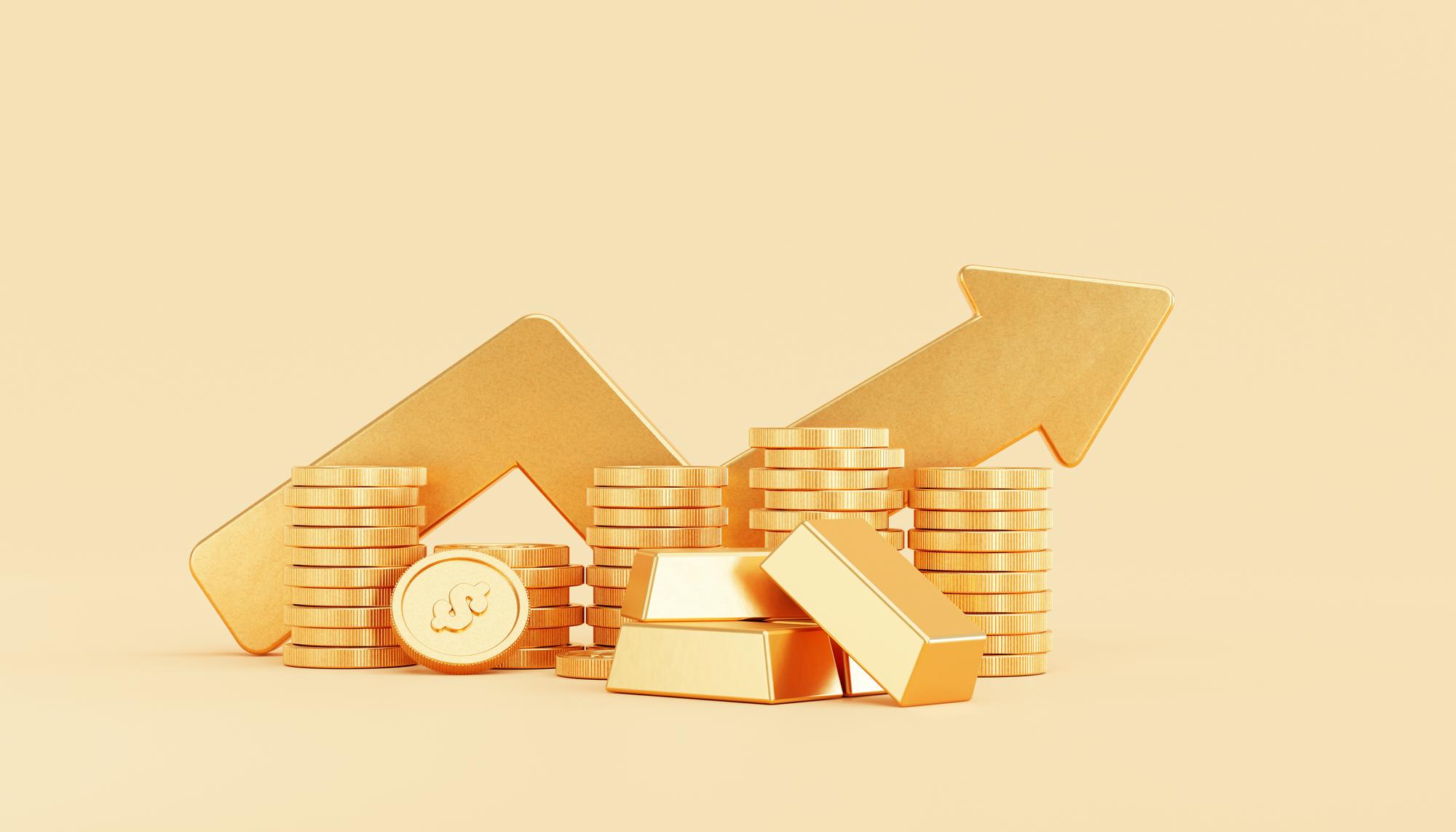
When Gold and Silver Soar: Why Coin Premiums Shrink as Metal Prices Rise
For most investors, the intuitive expectation is that when gold and silver prices rise, every coin made of those metals should increase in value proportionally. Yet, seasoned numismatists and bullion traders know the opposite often happens premiums on common coins, even graded or once highly sought-after examples, tend to shrink when the underlying spot prices of gold and silver surge.
Understanding why this occurs requires a deeper look into the mechanics of coin premiums, collector psychology, and market liquidity cycles.
- Understanding Premiums Over Spot
Every bullion coin, whether a U.S. Gold Eagle or a Canadian Maple Leaf, trades above its intrinsic melt value the value of the precious metal it contains. The difference between that melt value and the market price of the coin is known as the premium.
For example:
If gold trades at $2,000/oz, and a one-ounce American Gold Eagle sells for $2,100, the premium is $100, or 5% above spot.
Premiums reflect several components:
- Minting and distribution costs
- Dealer markups
- Supply and demand imbalances
- Perceived scarcity and desirability
- Liquidity factors (how quickly it can be resold)
While collector or numismatic coins command higher premiums due to rarity, design, or historical significance, even these premiums can erode during times of extreme metal price volatility.
- The Mechanics of Shrinking Premiums
When gold or silver rallies sharply, two forces typically cause coin premiums to contract:
- The Supply Surge
High prices encourage selling. Individuals, dealers, and institutions with hoards of coins bring them to market to take profits. The sudden increase in available supply creates a surplus of product, forcing dealers to tighten margins to remain competitive.
- The Demand Shift
As bullion prices rise, entry-level investors become hesitant. A $20,000 gold position suddenly costs $25,000 or more psychologically significant. Retail investors often pull back, focusing instead on smaller fractional coins or silver products. This drop in demand for full-ounce coins widens the supply-demand gap, compressing premiums.
- The “Metal First” Mentality
When gold and silver soar, investors shift from caring about the coin to caring about the metal. The distinction between an American Eagle, Krugerrand, or bar fades they’re all just conduits to metal exposure. Premiums that once justified brand or aesthetic differences disappear.
- Case Study: Gold Bullion Premium Compression
During gold bull markets such as in 2011 and again in 2020–2021 one could observe:
- Common-date $20 Saint-Gaudens Double Eagles, which once sold for 40–50% above melt, dropping to 5–10% above melt.
- Modern bullion coins like Gold Eagles or Maples tightening from 6–8% over spot down to 2–3%, as dealers competed aggressively for sales.
- Graded “MS-63” or “MS-64” common-date coins, often trading for only a few dollars more than raw examples, because collectors’ focus turned to bullion content rather than grade rarity.
The reason? The base metal value ballooned so rapidly that even coins with collectible appeal could not maintain their relative premium position. The underlying melt value “caught up” to, or even exceeded, what buyers were once willing to pay for the numismatic traits.
- The Silver Side: A More Volatile Story
Silver behaves similarly, but with even sharper swings. Because silver is cheaper and traded more heavily by small investors, the market is prone to emotional extremes.
When silver rockets higher say, from $20 to $35 per ounce the following tends to happen:
- Generic silver rounds and bars that once fetched $5–6 over spot might fall to just $1–2 over.
- 90% “junk silver” bags (pre-1965 U.S. dimes, quarters, halves) often compress from $3–5 over melt to 10% or more below melt when the market floods with sellers.
- Graded Morgan or Peace Dollars that previously carried $20–35 premiums above melt can suddenly be had at or near their bullion value.
The psychology mirrors gold: when silver’s spot price dominates headlines, buyers lose interest in collector nuance. Everyone becomes a bullion trader overnight.
- The Dealer Dynamic: Bid-Ask Spreads Flatten
Dealers operate in a competitive ecosystem. When prices rise quickly, most of them are already long metal they’ve been buying inventory at lower prices. As prices spike, they rush to sell into the rally before demand evaporates.
That creates a short-term glut of coins on the market.
To move inventory:
- They narrow bid-ask spreads.
- They lower retail premiums to attract cautious buyers.
- They offer bulk pricing on coins that recently seemed scarce.
At the same time, wholesalers and refiners are less willing to pay high premiums for buybacks, since they can melt or hedge more efficiently. This chain reaction filters down to the collector and investor alike.
- Graded Coins and the Illusion of Insulation
Many assume that graded coins (slabbed by PCGS or NGC) are immune to premium compression. After all, they’re encapsulated, certified, and trade within numismatic markets.
However, in practice, only truly rare dates or condition-census examples retain premium strength when bullion spikes.
Common-date MS-62 to MS-65 coins in classic U.S. series such as:
- $20 Saint-Gaudens
- $20 Liberty
- $10 Indians
- US Silver eagles MS 70
- Silver Morgan and Peace Dollars
…often find their market value pegged directly to melt during periods of metal mania. Dealers know buyers care more about ounces than holders. The grading label becomes irrelevant unless the coin is exceptional (low population, prooflike, conditional rarity, CAC-approved, etc.).
Thus, a certified MS-64 Saint that might have sold for $2,000 when gold was $1,700 could fetch only $2,050 when gold jumps to $2,000 — even though the melt alone is $1,940. The coin’s numismatic premium has evaporated.
- Historical Examples
The 1980 Gold & Silver Spike
When silver shot to nearly $50/oz in 1980, countless Morgan and Peace Dollars poured out of safe-deposit boxes. Prices of common-date coins collapsed to melt, while only key dates (like 1893-S, 1889 cc etc Morgans) held strong numismatic value.
The 2011 Silver Rally
As silver surged past $45/oz, premiums on silver Eagles once $6–10 over fell to just $1–1.5 above spot. Coin shops were inundated with sellers. Buyers evaporated overnight once the spot price corrected, leading to whiplash in spreads.
The 2020–2021 Gold Rush
Gold’s run toward $2,000 saw once-coveted pre-1933 U.S. gold coins trade nearly at melt. Collectors paused purchases; investors dumped common coins for liquidity; and bullion-only buyers refused to pay for aesthetics.
- The Counterintuitive Truth
The paradox is simple:
- When prices fall, premiums rise because supply dries up and sellers disappear.
- When prices rise, premiums fall because everyone becomes a seller.
Thus, the best time to buy premium-heavy coins collectible pre-1933 gold, graded common Morgans, or low-mintage commemoratives is often when gold and silver are quiet or depressed.
And the best time to sell them for melt value is when the metal spikes and premiums vanish.
- Implications for Collectors and Estate Holders
If you inherited or accumulated a large collection of gold and silver coins, understanding this cycle is crucial for timing your sale or appraisal.
When the market heats up:
- Your coins may appear more valuable because of higher spot prices.
- But the collectible component of that value may actually shrink.
Conversely, when the market cools:
- Spot value declines, but
- The premium may rise again as collectors re-enter the market.
Knowing this balance ensures you don’t undersell unique coins during a melt-driven rally.
- Where to Get a Fair Evaluation
When it’s time to sell or simply assess what your coins are worth, finding an honest, transparent buyer is key.
That’s where CashForCoins.net comes in.
They specialize in providing accurate, fair offers for both bullion and numismatic coins including full estate collections. Whether you have a few common Silver Eagles or a vault of pre-1933 U.S. gold, their team evaluates both melt value and collectible potential, ensuring you get a fair, market-based price not a pawn-shop discount.
Unlike many online buyers, they understand both sides of the market: bullion and numismatics. That means your coins get the attention and respect they deserve.
Conclusion
Rising gold and silver prices may make headlines, but they often compress the premiums that once set collectible coins apart from their melt value. For serious investors and collectors alike, understanding this dynamic can be the difference between selling into strength or leaving money on the table.
If you want a fair estimate or offer for your coins, graded pieces, or estate collection especially during volatile markets visit CashForCoins.net today.


